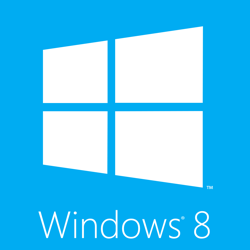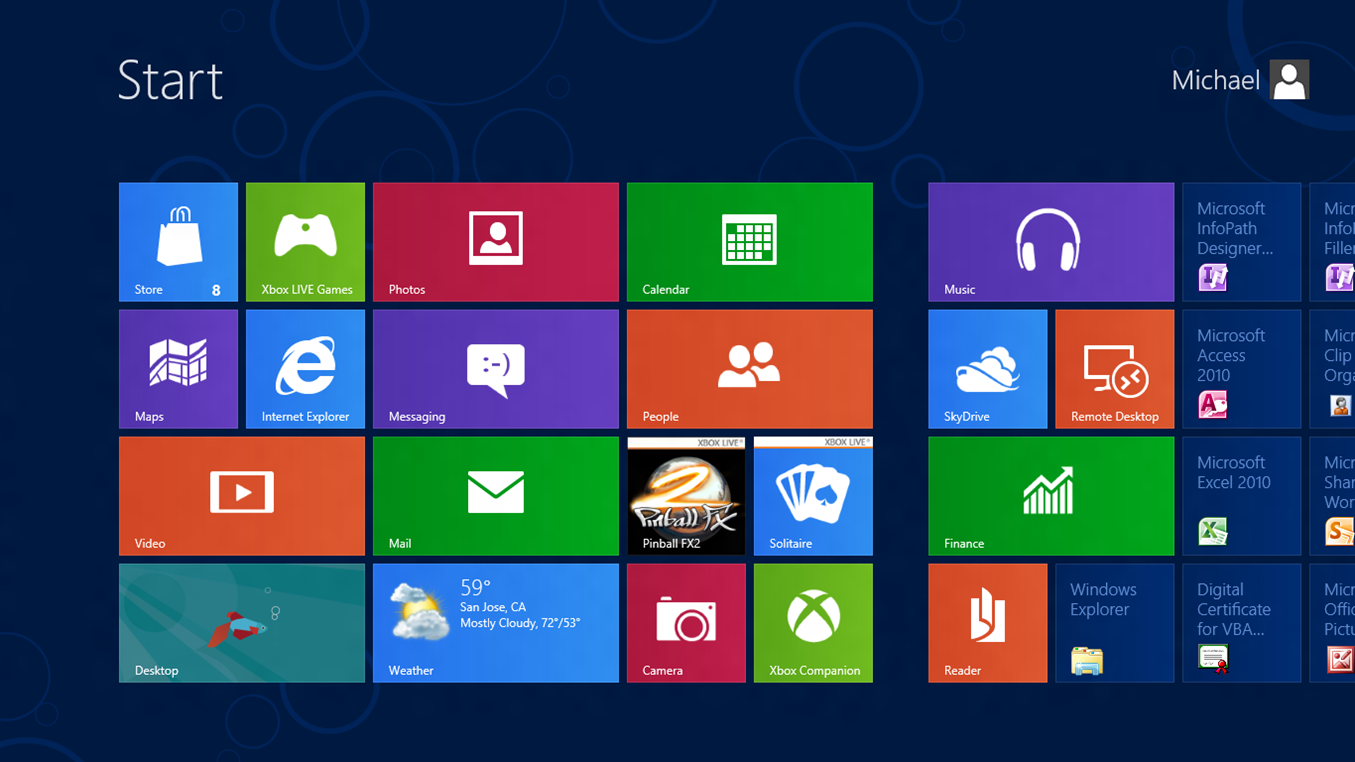
Windows 8
A major release of the most popular operating system with Live Tiles and touchscreen optimizations
- Category IT Infrastructure Software
Microsoft Windows 8 is an operating system that's designed to work with a wide array of desktop, laptop and tablet PCs. It can function with both x86 and x86_64 hardware, though there are also builds available that can run on ARM-based microprocessors. This level of flexibility has made it attractive for developers who've focused their efforts on traditional office applications.
Content creators and artists will love the fact that Windows 8 supports a number of pen-like devices, which can be used as a mouse on the screen. This is also good from an accessibility standpoint. Those who need to command their machines through the exclusive use of a keyboard might instead prefer to use the many built-in shortcuts that Windows 8 supports.
These are often bound to the so-called flag key, which allows users to do everything from open File Explorer to view the start menu with just a single combination. Unfortunately, users who haven't installed the optional 8.1 upgrade kit may not see a conventional start button. Even those who do won't receive the kind of menu that they may be used to from previous versions of Windows. This package might be vital for many users, since the initial 8.0 release no receives actual updates.
That being said, this update kit is fully compatible with a vanilla installation of Windows 8 and it may be installed automatically as part of the regular updates that the OS downloads on a regular basis. Users who are concerned about what these downloads might do to a mobile data connection, however, can slow them down to a degree. This may also prove useful for those concerned about the movement of location data.
Compatibility might be one of the biggest features for those who are migrating from another platform. In spite of the fact that Windows 8 radically changed many interface elements, the OS will actually run programs from many eras. If you're working with the 32-bit version, then you should find that software designed to run on Windows for Workgroups should run just fine. It even comes with a virtual DOS machine that can run older MS-DOS games.
While the 64-bit version lacks these features, it still boasts compatibility with 32-bit binary executable files. That means you can run Windows 95 and 98 era games on it without much difficulty. That makes Windows 8 a serious competitor to other technologies when it comes to the retrogaming community.
Best of all, the software should even run inside of a virtual machine, which makes it a great option for those who are spinning one up inside of a host operating system. Over time, this might be one of the biggest uses of Windows 8 especially when it comes to trying to launch legacy applications.
Pros
- Works with many devices
- Runs on 32-bit and 64-bit machines
- Supports pen tracking
- Includes numerous keyboard shortcuts
Cons
- Original version no longer supported
- May require upgrade packet to be installed
- Company
- Microsoft
- HQ Location
- Redmond, WA
- Ownership
- NASDAQ:MSFT
- Total Revenue (USD mm)
- $143,015









